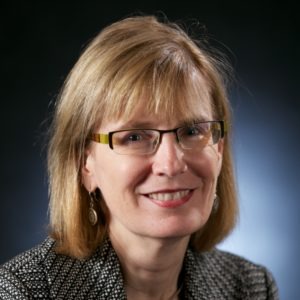
By JANINE FINNELL, Founder and Clean Energy Ambassador, Leaders in Energy
This article was originally posted on Advanced Biofuels USA and is being reposted with permission.
I attended the U.S. Department of Energy’s (DOE) “Bioenergy 2016: Mobilizing the Bioeconomy through Innovation” conference held in Washington DC from July 12-14, 2016. There were 17 breakout sessions on topics including bioenergy jobs; startup companies pitching business propositions to investors; advanced feedstocks; innovative materials for clean energy; and more! The green jobs topic surfaced during the Plenary and breakout session on “Growing a Bioeconomy Workforce.” Highlights on what I learned at the conference regarding green jobs are presented below.
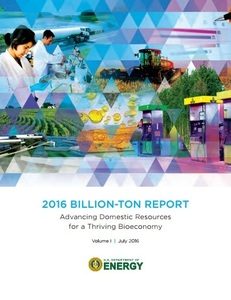 Plenary Session: Green Jobs Discussion
Plenary Session: Green Jobs Discussion
Billion Ton Study Update and Bioenergy Jobs
In the plenary session on the U.S. Billion-Ton Update: Biomass Supply for a Bioenergy and Bioproducts Industry, moderator, Cathy Woteki, Under Secretary for Research, Education, and Economics, U.S. Department of Agriculture, said that 1.1 million jobs are being produced in the bioeconomy. Brent Erickson, Executive Vice President, Biotechnology Industry Organization, stated that 4 million jobs can be attributed to the bioeconomy (when including ancillary jobs spun off in the 1.1 million jobs figure).
We also saw the preview video of a new bioenergy jobs and career advancement tool that is being developed by the DOE Bioenergy Technologies Office, which is anticipated to be released by September 2016.
New DOE Strategic Bioenergy Plan: Education, Workforce Issues and Bioenergy Jobs
The U.S. Department of Energy’s Bioenergy Technologies Office recently developed its “Strategic Plan for a Thriving and Sustainable Economy,” with a vision to 2040 that calls for a thriving and sustainable bioeconomy fueled by innovative technologies. A component of the plan focuses on education and workforce development involving the development of green jobs for the bioeconomy. Career education, vocational training, and advancement opportunities have been identified as a strategic need for the country to expand the green economy.
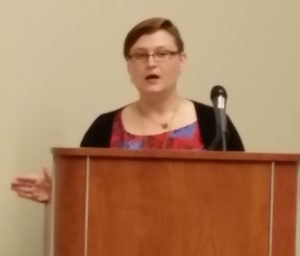
“Growing a Bioeconomy Workforce” Breakout Session
On Wednesday, July 13th, there was a breakout session for “Growing a Bioeconomy Workforce.” The session convened “experts in the workforce development arena from industry, government, and academia to present best practices, lessons learned, and next steps in cultivating the future bioenergy workforce.”
Alexis Thaler Wolfe, Oak Ridge Institute for Science and Education (ORISE) Fellow with the Bioenergy Technologies Office, introduced the session moderator, Dan Smolen, to the audience.
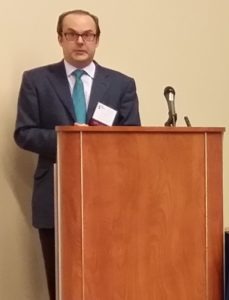
Dan Smolen is the Managing Director, The Green Suits, LLC. The Green Suits, LLC is a nationally known and highly respected talent recruitment and success management resource for cleantech, green business, and the social good and related workforce and education in the bioeconomy.
The three panelists included:
- Daniel Cassidy, National Program Leaders, Division of Bioenergy, National Institute for Food and Agriculture, United States Department of Agriculture
- Ira “Ike” Levine, Professor and CEO, University of Southern Maine, Algal Aquaculture Professionals
- Matt Garcia, Senior Science and Technology Policy Fellow, Jobs Strategy Council, U.S. Department of Energy, Office of the Secretary
Dan Smolen engaged the audience and the panelists with a series of questions to gauge how many attendees were currently working in the bioeconomy and the extent of their involvement in the sector and overall energy economy at large.
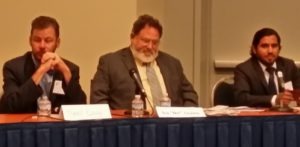
The Bio and Energy Economy Workforce
Smolen then asked the panel what the current bioeconomy workforce looks like. Matt Garcia prefaced by saying that his background encompassed the larger energy sector rather than bioenergy. He cited the recent U.S. Energy and Employment Report prepared for the U.S. Department of Energy by BW Research. Energy jobs are defined as traditional energy employment, which encompasses all jobs necessary for the production, transmission, distribution, or storage of the energy that fuels economic and social activities. Garcia stated that approximately 3.6 million Americans work in the traditional energy sector, which includes oil and gas, electric power, etc.
The DOE report provides some statistics pertaining to bioenergy employment in the power generation and fuels sectors as follows:
| Bioenergy Sector | Number of Workers (Q2 2015) |
| Electric Power Generation | |
| Bioenergy/Biomass | 18,804 |
| Fuels | |
| Corn Ethanol | 47,250 |
| Other Ethanol/Non-Woody Biomass | 14,761 |
| Woody Biomass | 18031 |
Source: U.S. Energy and Employment Report, prepared for the U.S. Department of Energy, BW Research, 2016, page 61. The BW Research Energy Employment Index methodology relies on the most recently available data from the Bureau of Labor Statistics Quarterly Census of Employment and Wages.
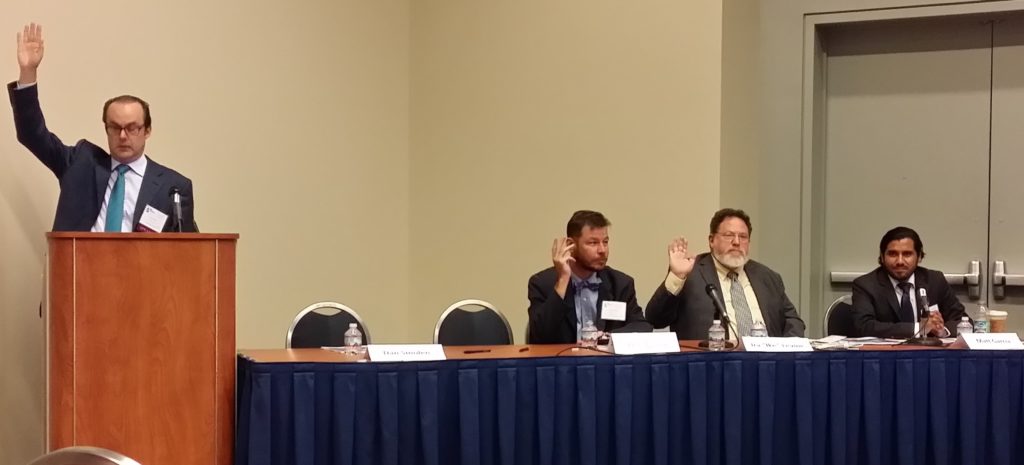
Daniel Cassidy pointed out that the bioeconomy workforce includes the entire bioenergy supply chain, ranging from producing the biomass to processing, distribution, and harvesting. The bioeconomy is defined by the Federal Activities Report on the Bioeconomy as “the global industrial transition of sustainably utilizing renewable aquatic and terrestrial biomass resources in energy, intermediate, and final products for economic, environmental, social, and national security benefits.” He also said that a good deal of this activity involves a hidden bioeconomy workforce. Traditional energy economy surveys may not fully capture the extent of the bioeconomy and he believes that hidden jobs are quite numerous.
Cassidy wondered how big this hidden economy is and what the difference is in numbers between overall bioeconomy versus bioenergy jobs. Garcia said that we really don’t know much about the full extent of bioenergy jobs.

Employers reporting a skills gap – is this true?
The DOE study pointed out a skills gap and how 71% of employers report difficulties in finding workers in the energy sector. Garcia said that the reasons are not clear on why this is an issue and whether the issue was more of a skills gap or a wage gap. Reasons reported in the DOE report for difficulties in hiring range from lack of non-technical skills including work ethic, critical thinking, etc, the lack of experience, training or technical skills; and insufficient qualifications, certifications or education. This report did not address the issues of whether wage levels had anything to do with the difficulty in finding workers.
Ike Levine discussed the universities that he works with through the Algae Technology Educational Consortium (ATEC) project and how he is increasingly seeing non-traditional students, regardless of where they attend, e.g. The Lewiston Auburn College of the University of Southern Maine (USM LAC)(his school) or the Santa Fe Community College (SFCC) student body, which represent a new paradigm in education. They are older, married, with a job, children, etc. and they face many challenges besides staying in school.
| Student Statistics from Santa Fe Community College
• ~ 6,500 credit students • 70% > 25 years old • 50% have children • Public school drop-out rate near SFCC – 40-50% • 75% Part time • 62% Female • 45% Hispanic • 5% Native American • 2015-16 Best for Vets: Career and Technical Colleges |
Levine reported on these schools are working to make their courses more flexible in terms of time requirements for non-traditional students. For example, at USM LAC they have once per week, 2.5 hour lectures which helps the students who have jobs to attend the class.
“K-to-Gray”: What is Being Done to Prepare the Current and Future Workforce for Bioeconomy Jobs?
Smolen noted that millennials are the largest part of workforce, followed by Baby Boomers and Generation Xers, and that the “Plurals” generation will follow the Millennials in the future. He asked what is being done to help provide opportunities for this workforce and position those who are in K-12 to prepare for bioenergy jobs. In addition, fossil fuel industries like coal mining are going away; what is being done to provide alternative employment for these communities? What about underserved communities?
Garcia talked about how DOE Science, Technology, Engineering, and Mathematics (STEM) programs support a pipeline into energy jobs. In addition, DOE has developed an energy literacy program focused on K-12 and K-to-Gray. More on clean jobs and career planning is available at this DOE website.
Garcia pointed out how the current economy is in an incredible state of flux, with phenomenal and disruptive changes in technologies such as smart phones and the internet, as well as new businesses and business models such as Uber and AirBnb. While this can provide tremendous opportunities, it is not clear what this all means for the economy and workforce. He posed the larger question on how can we work to create enough jobs to have a more inclusive economy for all, particularly for underserved populations? How can bioenergy jobs play a role in this new economy?
Garcia brought up that there is increasing coordination by the Federal government to examine workforce issues. For example, the Jobs Strategy Council, created by the U.S. Department of Energy and chaired by the Secretary of Energy, collaborates with many interagency partnerships on workforce issues with the U.S. Departments of Labor, Education, Defense, Commerce, Agriculture, and Veterans Affairs.
Daniel Cassidy discussed how his organization, the USDA National Institute for Food and Agriculture (NIFA) supports a variety of educational programs. One example is a $40 million Bioenergy program with the University of Washington and Walla Walla Community College. As part of this, the Walla Walla Community College in launched a new Bioenergy Operations Program is designed to create a future workforce for the advanced hardwood biofuels industry. The program is aimed at students who are new to the biofuels, chemical, food, pulp, agriculture, and municipal wastewater sectors, as well as people who are already employed in these industries. This program also dovetails well with a DOE initiative that Cassidy referenced, Investing in America: Building an Economy that Lasts, which called for more community college engagement.
Cassidy highlighted a project with the University of Wisconsin, Madison (UW) and the Sustainable Development Institute (SDI) of the College of Menominee Nation (CMN), comprised of educators, researchers, and tribal elders who bring an immense variety of understandings, abilities, and interests in science and culture, bioenergy, sustainability, and education. This project in partnership with the Menominee Nation works to incorporate native tribal beliefs and culture into bioenergy projects.
Cassidy underlined the need to help educators become more knowledgeable about bioenergy so that this kind of education can be incorporated into their classrooms. This is the emphasis of a $5 million program with Cornell University that provides faculty development opportunities for teachers (grades 6-16). One teacher became so enthusiastic about bioenergy that she pursued and received a grant from New York State Energy Research Development Authority (NYSERDA) to install an anaerobic digester in her school! More information on this educational program through the Sun Grant Initiative for educators is available here.
How Did the Panelists Find Their Energy Career Path?
Smolen asked the panelists to tell the audience about their own career paths, what brought them here, and how they got into that work. These stories often involved circuitous and serendipitous routes.
Levine got into algae by accident. He made a major decision to go to England to play rugby. Ike asked the Dean of the Medical School that he was attending for a leave of absence and while the University Dean said that they liked well-rounded individuals, then the Dean said “If you go, don’t come back.”
Levine went to England and after leaving medical school, he went to Cornell University’s Isle of Shoals Marine Laboratory. There he was introduced to algae when he made a wager with another student when he was on a field study assignment. Each pair of students had one study site, one needed to work up the algae and the other the worms and snails (invertebrates). Levine won the bet and chose algae, which shaped his career as Ike now heads up the Algae Foundation! From the Island Lab he eventually was offered a scholarship to attend the Marine Science Department at the University of South Florida where he got his Masters, followed by a Doctorate in Aquatic Botany, at the University of Hawaii.
Garcia told a story about his upbringing in Brownsville, Texas, in the Hispanic community and how he knew the value of hard work from working at the Fruit of the Loom plant. He ended up earning a Ph.D. in neuroscience and was introduced to the energy field via his role in a project on energy literacy at DOE, where he currently works with the Department on their Jobs Strategy Council.
Cassidy had worked at International Paper and was involved in working with private landowners as a private forest landowner advisor. When the forest products industry began to dwindle, he pursued his doctorate in natural resources from the University of Tennessee and ultimately landed a job at the United States Department of Agriculture’s program in bioenergy where he currently works.
What is Being Done Well, and What More Needs to be Done in Workforce Education?
The role of online education was raised in the Q&A session, as there are a number of courses and degrees increasingly being offered by universities in bioenergy, e.g., the Penn State Masters of Professional Studies in Renewable Energy and Sustainability with an Option in Bioenergy. Cassidy emphasized the important role of the Cooperative Extension Service in offering e-learning and how it is a “sorely underused resource.” Another example of a bioenergy e-learning course being offered by the Penn State College of Agricultural Sciences is available here.
Panelists emphasized that the best educational programs combine online, laboratory bench, and experiential learning. Levine discussed how bioenergy and the bioeconomy involves growing living things like plants and how one develops a special relationship with plants that you cannot do solely via online and classroom learning. To farm, one has to be in the field growing plants. One important example of where many of these elements all come together is at the ATP3 Testbed, where in 2012 the DOE selected Arizona State University to lead the Algae Testbed Public-Private Partnership (ATP3) for a $15M award for its Advancements in Sustainable Algal Production opportunity.
In addition, The Algae Foundation launched the Algae Technology Educational Consortium (ATEC) project, which is comprised of 17 different academic, educational, and industry leader members, including the University of Southern Maine and the Sante Fe Community College (SFCC), to help students learn practical applications of farming and biotechnology developing the skills for the next generation of algal-based jobs. ATEC realized that its greatest outreach would be in developing online lecture courses but that would leave it short on hands-on lab courses. Thus, they have developed intensive, hands-on, live lab courses organized by ATP3 which has five sites around the country, along with SFCC and Austin Community College which will serve as regional sites for the ATEC lab courses, to coordinate with the 6 online courses that are being developed for two separate AA degrees (farming and cultivation and Algae Biotechnology).
Conclusion — Importance of Networking in Finding Bioenergy, Green Jobs, and Jobs in General!
Smolen pointed out the important role of networking in finding jobs. He did a shout out for Leaders in Energy in the Washington DC area, which helps clean energy and sustainability professionals network through its monthly events convened on leading edge energy, environmental, and sustainability topics such as the circular economy, financing for clean technology, green jobs, and more. Leaders in Energy events have consistently raised the subject of green jobs from all angles, from helping jobseekers figure out where the opportunities are to showcasing champions of sustainability from different generations. Leaders in Energy will conduct its Third Annual Green Jobs event in Arlington, VA on August 18th. More info on the organization’s events is available here.
Speaking of networking, Christy Sterner, who is the Technology Manager, Algae Program, at the DOE Bioenergy Technologies Office, reached out to other session attendees and asked everyone to stay in touch with each other regarding these important workforce and education issues. More on Sterner and her program at DOE are available here.
About the author
Janine Finnell is the Clean Energy Ambassador and Founder of Leaders in Energy. More information on the organization is available at https://www.leadersinenergy.org and in the Leaders in Energy Research, Communication, Policies & Analysis (LERCPA) LinkedIn group. She enjoys connecting with other leaders (current and aspiring!) in clean energy and sustainability who are interested in collaborating on projects and related opportunities to make a difference.
Please feel free to reach out to her at CleanEnergyAmbassador@leadersinenergy.org if you have any thoughts that you would like to share regarding this article or your interests in clean energy and sustainability.
Photos by Janine Finnell unless otherwise noted.


Leave a Reply